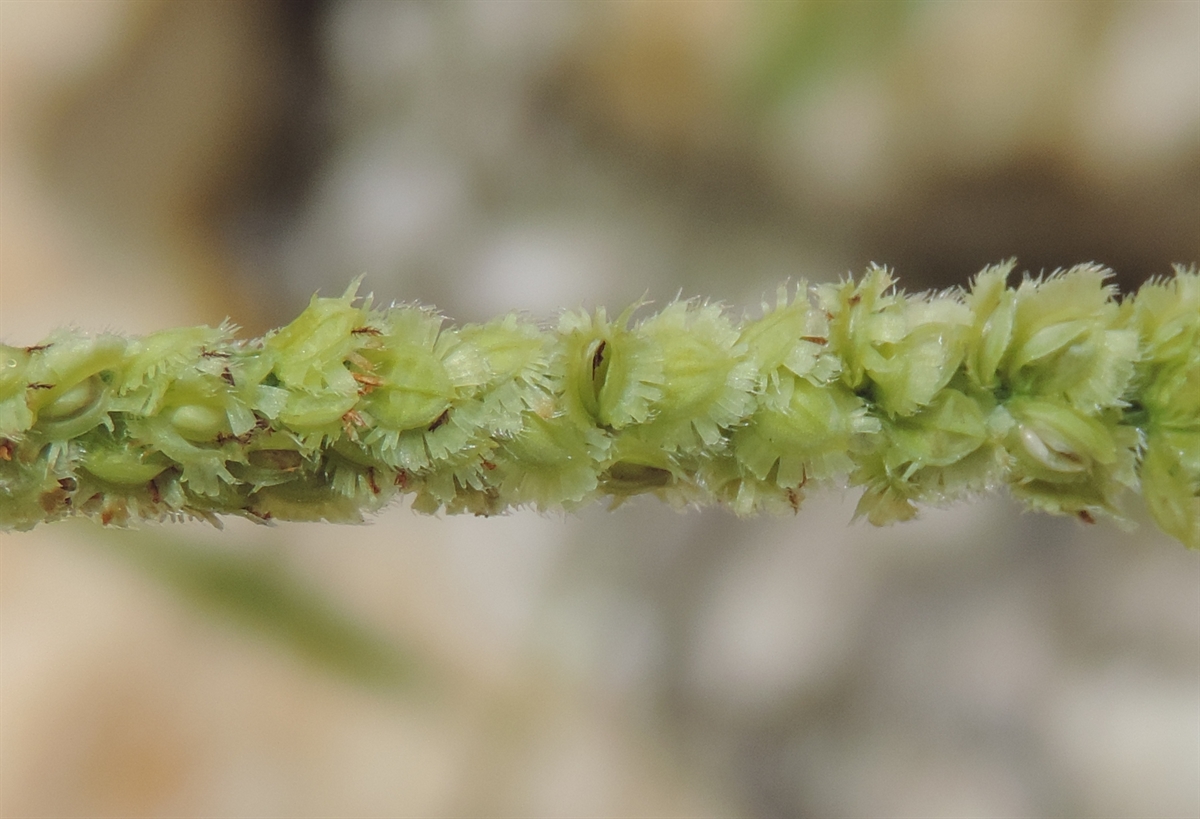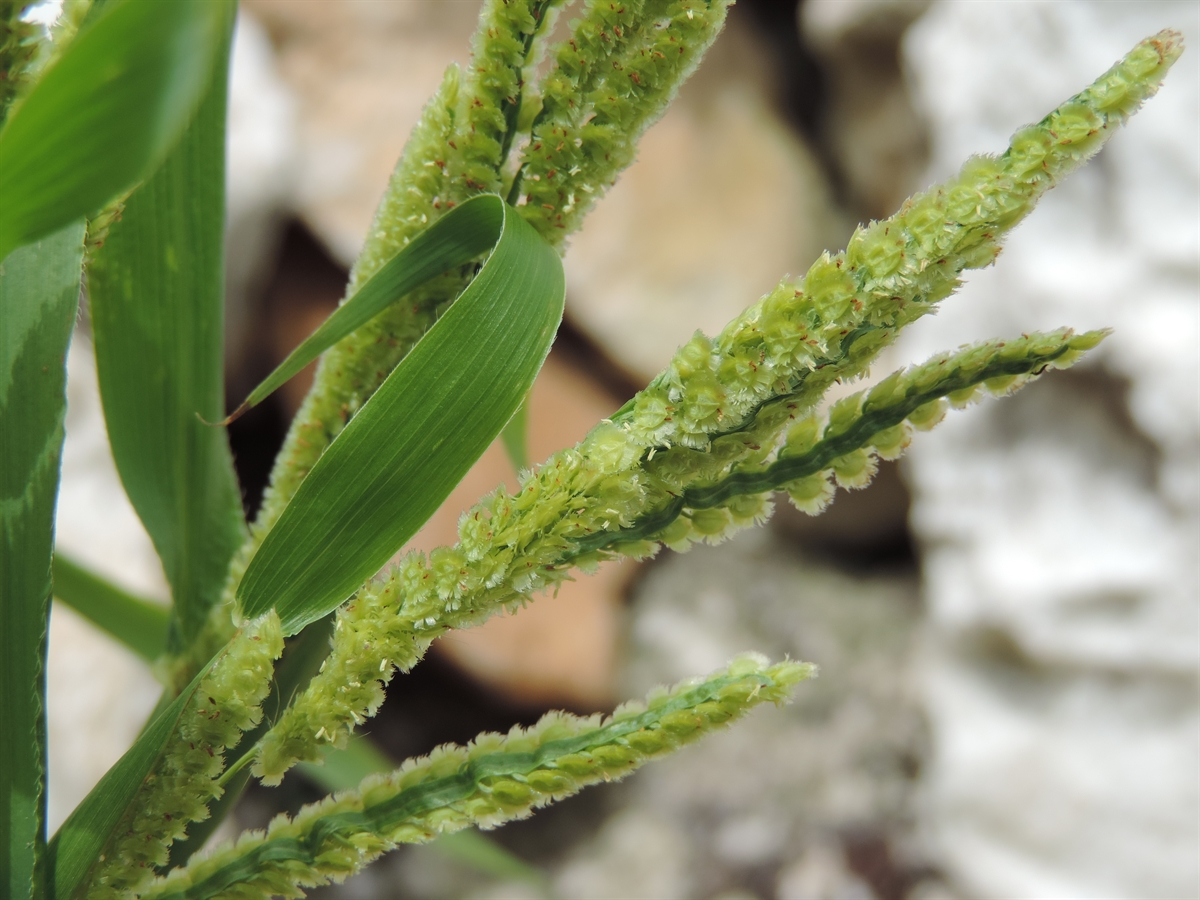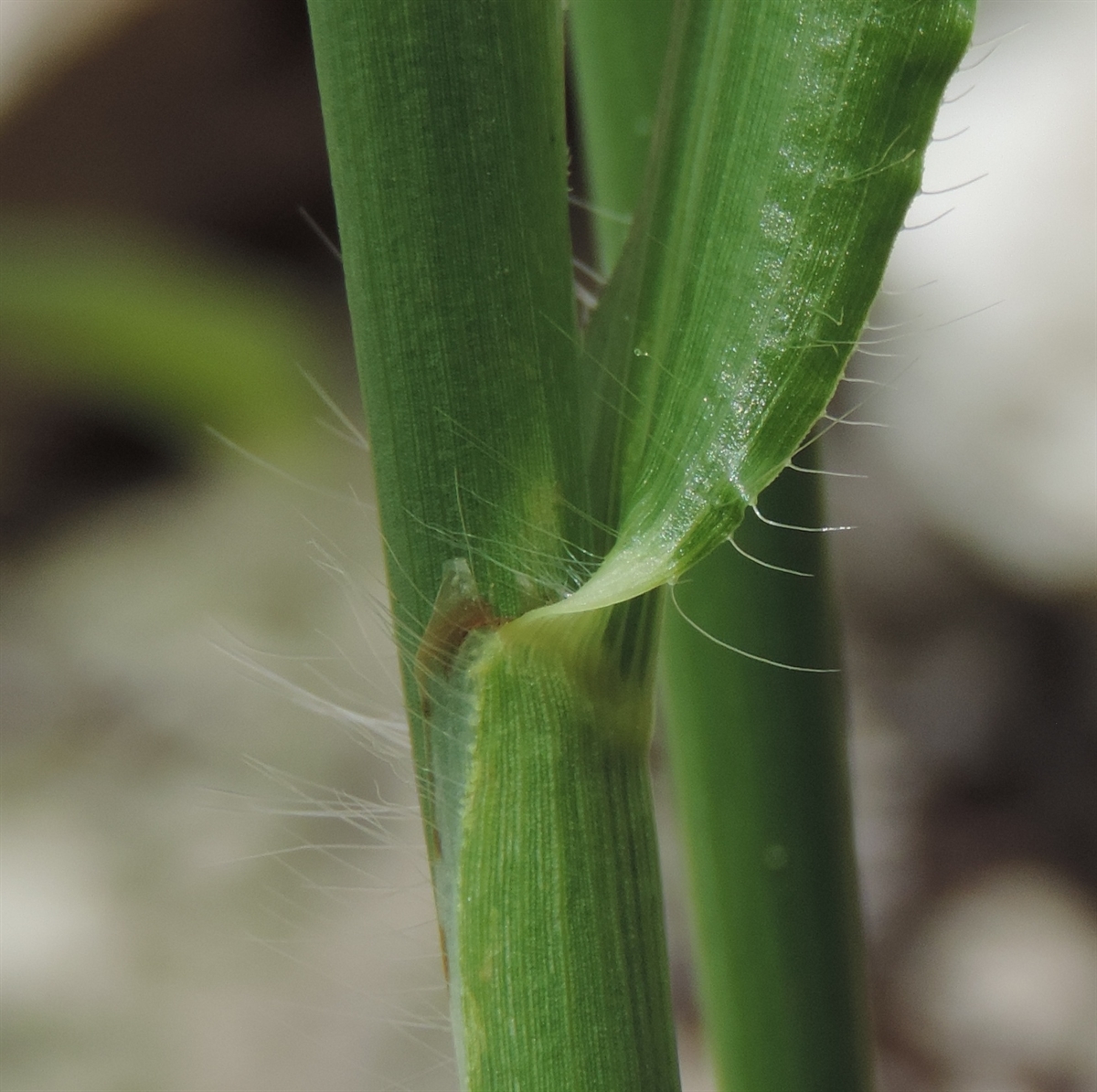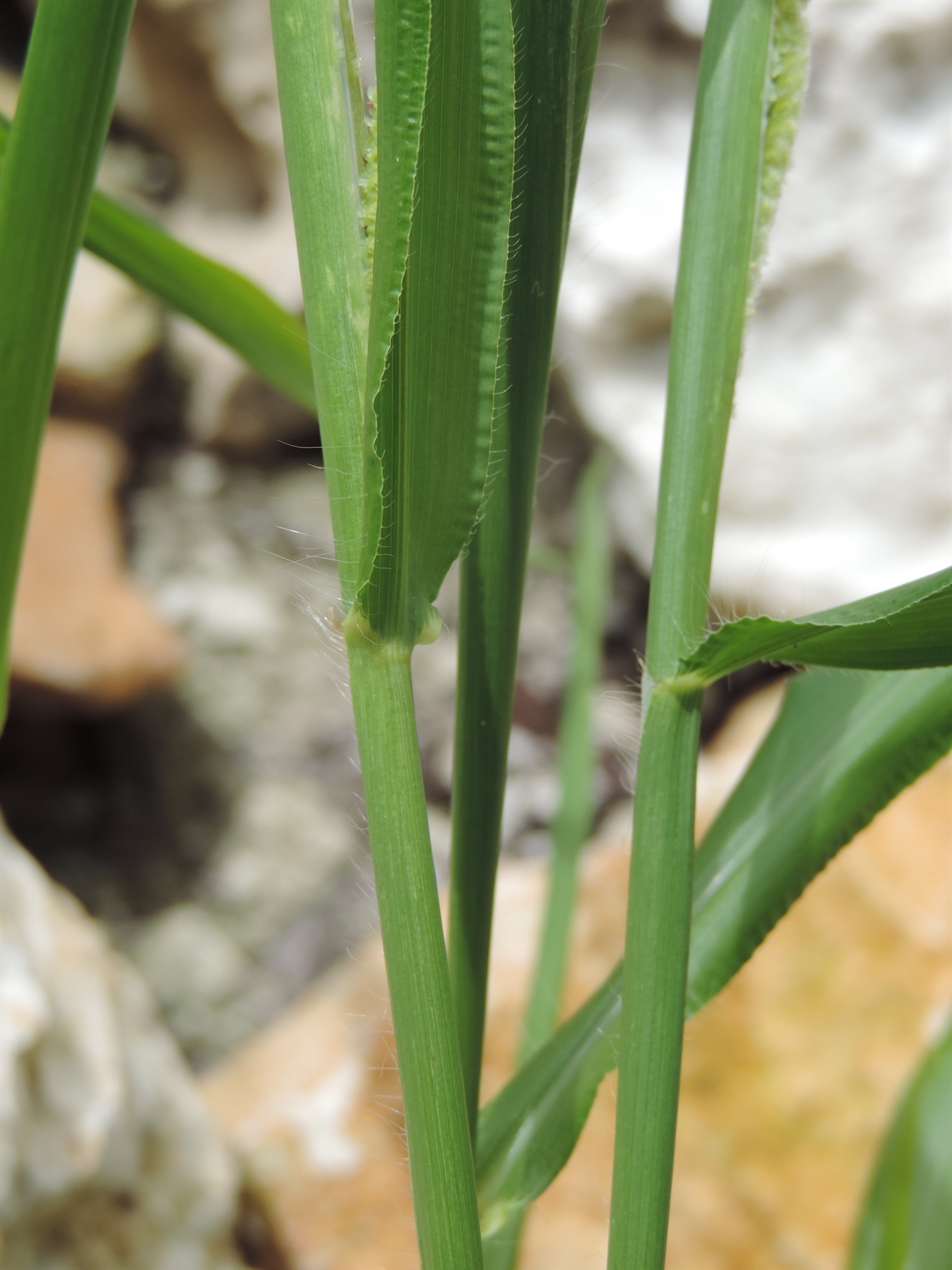Habit: Paspalum fimbriatum grows as clumping annual to 100 cm in height when flowering. The leaves are arranged alternately to 20 cm in length (usually shorter) with a pubescent basal sheath extending along the stem that is slightly pubescent. At the point of divergence of the leaf sheath to the leaf blade is a fringed ligule. The leaves are parallel veined and have a slightly undulate leaf margin.
The zygomorphic flowers are arranged in a panicle of 3-8 racemes made of appressed fringed, winged spikelets. At the base of each spikelet are 2 structures called glumes. The first glume small and the second larger. In each spikelet there are flowering structures each is subtended by 2 additional structures (lemma and palea). There are two florets with the lower one sterile and reduced while the upper fertile with 1 stamen and a superior ovary each with a single locule and seed. The fruit is a fringed winged caryopsis.
Habitat: Paspalum fimbriatum grows in Human Altered environments (yard, old fields).
Distribution: Paspalum fimbriatum occurs throughout the island groupings in the Lucayan Archipelago, the Caribbean, Central and northern South America. Now also in Asia and the Pacific islands.
Medicinal/Cultural/Economic usage: Paspalum fimbriatum is not known to be used medicinally in the Lucayan Archipelago



